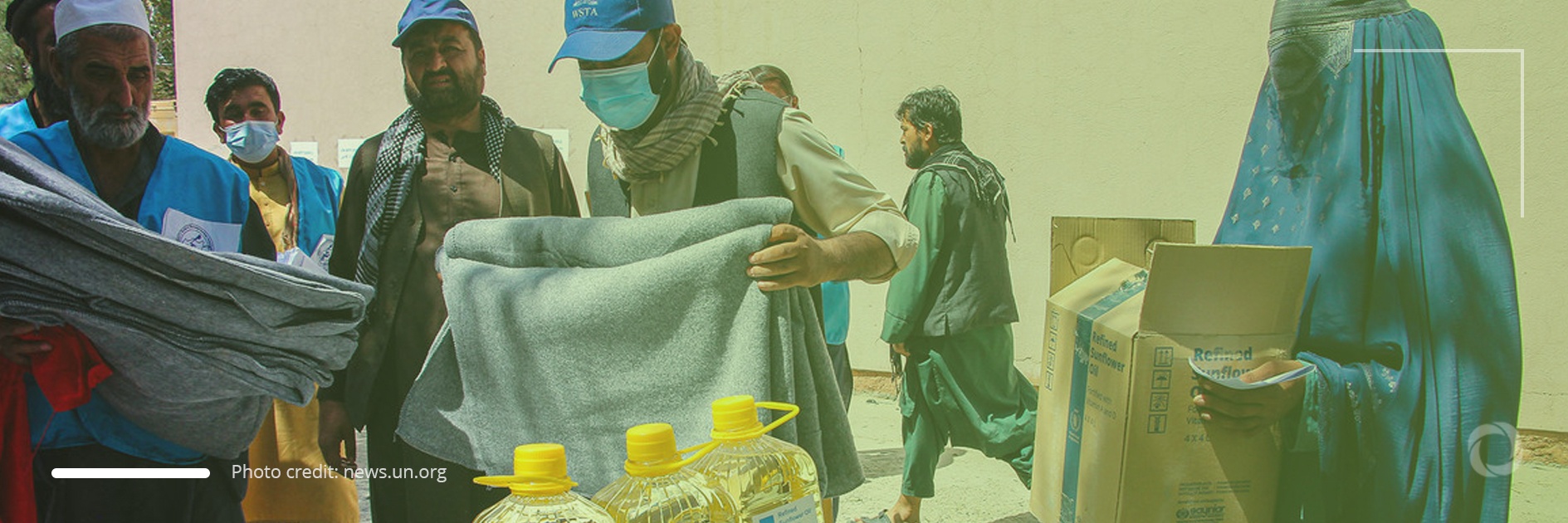Humanitarian crises occur as a result of natural or man-made events such as natural disasters or conflicts that threaten the health, wellbeing, and security of people in communities, regions, or countries. Today, more than 25 states are faced with such emergencies, with nearly 235 million people being affected. Ranging from Afghanistan and Pakistan in Asia to Colombia in South America and Ukraine in Eastern Europe, these countries are mostly poor and underdeveloped. In our latest article, we offer a comprehensive summary of the nine states that are the most affected by ongoing humanitarian crises.
Humanitarian appeals
The United Nations Office for the Coordination of Humanitarian Affairs (UNOCHA) is a United Nations entity empowered to provide effective humanitarian response to complex emergencies and natural disasters through coordination, advocacy, policy, information management, and humanitarian financing tools and services. The UNOCHA is currently managing 27 national or regional appeals targeting almost 160 million people out of the 235 million currently in need of aid.
Together with other international actors, UNOCHA develops response strategies and multi-year planning programs that act as central coordinating nodes for the delivery of humanitarian aid in protracted crises over several years. It is worth noting that the average duration of a humanitarian appeal is about seven years and 90% of these last longer than three years.
Countries currently going through the most complex humanitarian crises
✔️ The humanitarian crisis in Afghanistan is the consequence of longstanding war, political instability, poverty, malnutrition, and reoccurring natural disasters. Currently, 18.4 million people require humanitarian assistance in Afghanistan, almost double the number at the beginning of 2020
✔️ The humanitarian crisis in the Democratic Republic of Congo (DRC) is a result of over two decades of conflict and political instability. DRC is one of the world’s largest and most complex humanitarian crises requiring humanitarian assistance for 19.6 million people in 2021, 4 million more than in 2020
✔️ The humanitarian crisis in Central Sahel Africa – the Sahel region encompasses the border areas of Burkina Faso, Mali, and western Niger. High levels of poverty, violence, and food insecurity persist and have severely impacted the region. Currently, 29 million Sahelians require urgent humanitarian assistance and protection which is 5 million more than one year ago
✔️ The humanitarian crisis in Venezuela is a result of years of economic turbulence, hyperinflation, political instability, and institutional ineffectiveness which have increased the number of Venezuelans in need to 7 million people. In 2020 alone, the country’s GDP contracted by 26% which will likely result in increased poverty rates, food insecurity, and a further reduction in essential services
✔️ The humanitarian crisis in Syria comes after a decade of war and violence and the humanitarian needs in this country continue to increase. Currently, 13 million people are in need of urgent humanitarian assistance while more than 4.6 million children across the country are food-insecure. Moreover, the COVID-19 outbreak has overwhelmed the already depleted health system
✔️ The humanitarian crisis in Yemen remains the world’s biggest humanitarian crisis. Intensifying conflict, violence, and a lengthy economic blockade have deepened the ongoing economic crisis in Yemen. Currently, about 24.3 million people are in urgent need of humanitarian assistance which represents 81% of the population. The majority of humanitarian efforts are affected by attacks on facilities protected by international humanitarian law such as medical centers
✔️ The humanitarian crisis in South Sudan means that the country is facing the most challenging period since it gained independence a decade ago. Currently, over 7.5 million people are in desperate need of emergency humanitarian aid. The situation worsened in 2020 when humanitarian workers and assets were often attacked. The UNOCHA anticipates that food insecurity will likely worsen in 2021 due to insecurity, COVID-19 pandemic, floods, and the economic crisis
✔️ The humanitarian crisis in Ethiopia – the ongoing conflict between the Ethiopian government and the Tigray People’s Liberation Front, combined with multiple economic and environmental shocks, has pushed over 400,000 people into famine-like conditions and another 21.3 million in a situation requiring urgent humanitarian assistance. The United Nations warns that Ethiopia is facing an immense humanitarian crisis
✔️ The humanitarian crisis in Nigeria – the conflict in the north-eastern states of Borno, Adamawa, and Yobe has affected a large proportion of the Nigerian population. Currently, about 8.9 million people need humanitarian assistance. Moreover, the UNOCHA’s assessment anticipates that the number of those in need will rise by 13% by the end of 2021
DevelopmentAid is the leading provider of business intelligence and recruitment tools designed to assist those active in the development sector. Join today and gain access to exclusive information on upcoming funding opportunities (tenders and grants) from the largest bilateral and multilateral donors.

